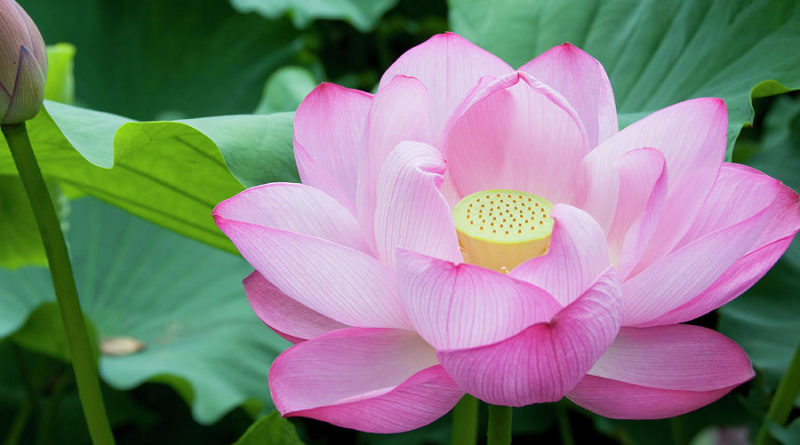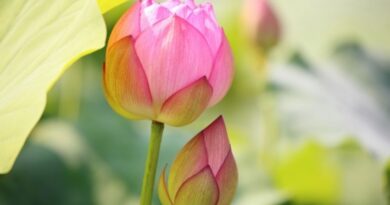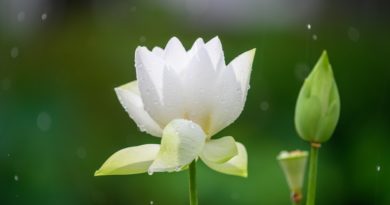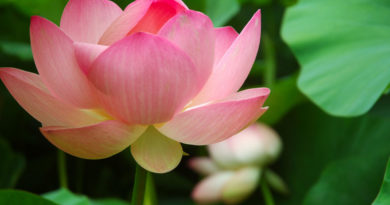The Essence Of Tipiṭaka – 6. Saṃyutta Nikāya: Khandha Vagga Saṃyutta Pāḷi
The Essence of Tipiṭaka – 6. SAṂYUTTA NIKĀYA: Khandha Vagga Saṃyutta Pāḷi
3 Khandha Vagga Saṃyutta Pāḷi
The main theme of most suttas in this division is, as the name implies, khandhas, the five aggregates that constitute what is regarded as a being. Each of the components of these aggregates, namely, matter, sensation, perception, mental concomitants and consciousness is shown to be a bundle of dukkha (suffering). Made up of thirteen saṃyuttas, Khandha Vagga forms an important collection of doctrinal discussions on such topics such as atta, anattā, eternity and annihilation.
The Nakulapitā Sutta gives an account of the advice given to Nakulapitā, an ageing disciple of the Buddha. He asks for advice from the Buddha on how to conduct and keep himself free from the pains of old age and disease. The Buddha explains that rūpakkhandha, the material body being a bundle of dukkha, is subjected constantly to the pains of old age and disease; but the mental complex could be kept free of agony and pain by keeping it undefiled with impurities. A more detailed exposition of this brief explanation of the Buddha is given to Nakulapitā by the Venerable Sāriputta. The uninterested common worldling clings to the five aggregates through craving and conceit, and holds the wrong view that each of the aggregates (rūpa, vedanā, saññā, saṅkhāra and viññāṇa) is self, atta. Even as he clings to the five aggregates as atta these aggregates manifest their own oppressive characters by inflicting pain of old age, pain of disease, pain of defilements (kilesa). Because of these oppressive pains the uninstructed common worldling is subjected to sorrow, lamentation, pain, grief and despair. But when the worldling becomes instructed and has become accomplished in the thirty-seven factors of enlightenment, he does not cling to the five aggregates through craving, conceit or holding wrong views of self. Then even though the five aggregates manifest their own characteristics of being oppressive, he is no longer subjected to mental afflictions of sorrow, lamentations, pain, grief and despair.
In the Bhāra Sutta, the five groups of grasping (pañcupādānakkhandha) are designated as a burden, a heavy load. It is craving for sense objects, craving for existence, craving for non-existence which is responsible for this heavy burden being borne along. Realization of the Noble Truth of cessation, nibbāna, is where the craving is completely eradicated, where this heavy load is finally discarded.
The Yamaka Sutta explains that the five aggregates are of an impermanent nature; they should be looked upon as one’s enemies. Understanding their real nature of anicca, anattā and dukkha, the twenty kinds of wrong views of self should be discarded so that one may not be set upon by these enemies.
The Vakkali Sutta gives an account of the Buddha’s visit to the ailing Bhikkhu Vakkali upon his request. The great compassion of the Buddha becomes manifest in this account. When Vakkali informs the Buddha that for a long time he has been longing to set his eyes upon the Buddha, the Buddha gently reproaches him: “Vakkali, what is there in seeing the decomposing body of mine? It is enough to see the Dhamma. He who has seen the Dhamma has seen me. The body of mine is like all else always rotting away, falling into decay.” The Buddha teaches him the Dhamma on the impermanence of all things, their unsatisfactoriness and insubstantiality and finally shows him the way to liberation.
Of the five aggregates, the Buddha says it is better for a person to mistake his physical body as atta (self), rather than mind or consciousness, because the physical body appears more solid and substantial than thought or mind which constantly changes faster than the physical body.
The Khemaka Sutta records an illuminating conversation between a bhikkhu named Khemaka and a group of bhikkhus who want to verify the stage of his attainments. When the bhikkhus ask him if he sees self or anything pertaining to self in the five aggregates, Khemaka replies, “No.” But when the bhikkhus suggest that, if so, he must be an arahatfree from all defilements, Khemaka replies that though he does not find self or anything pertaining to self in the five khandhas, he is not an arahat free of taints. He still has a vague feeling “I am” although he does not clearly see “This is I” with respect to matter, sensation, perception, mental formations or consciousness.
His vague feeling is likened to the smell of a flower: it is neither the smell of the petals, nor of the colour, nor of the pollen, but the smell of the flower. He then goes on to explain that even if a person retains the feeling “I am” at the early stages of realization, as he progresses further and attains to higher stages, this feeling of “I am” disappears altogether, just as the smell of soap lingers in a freshly washed cloth and disappears after a time when it is kept in a box.
In the Puppha Sutta, the Buddha declares that he is not quarrelling or arguing with the world; it is only the world with its devas, māras, kings and people that is disputing with him. To proclaim the truth is not engaging in disputes. He speaks only what wise men hold to be true. Wise men say that there is no corporeality, sensation, perception, mental formations or consciousness which is stable, permanent, enduring. He says the same. Wise men say that there is only corporeality, sensation, perception, mental formations or consciousness which is unstable, impermanent, unenduring. He also says so.
“In this changing world, there are only things which are subject to constant change and decay. Perceiving their real nature, I declare that the world is compounded of things subjected to decay and decomposition, namely, the aggregates of matter, sensations, perceptions, mental formations and consciousness, which are incessantly rising and passing away. There is nothing else besides these perishing aggregates. Bhikkhus, I teach this Dhamma in a brief manner. I also teach this Dhamma more comprehensively and completely. But if the uninstructed common worldling remains unperceiving and unknowing in spite of very enlightening discourses, how can I help? Various kinds of lotus grow in the water, develop in water, rise above water, and remain there unpolluted by water; so also I was born in this world, I grew up in this world, I developed in this world and rose high above it without being attached to it, without being affected by it.”
In the Pheṇapiṇḍūpama Sutta, the aggregate of rūpa is likened to froth; it is unstable, impermanent, constantly rising, and vanishing. It is therefore not self. The aggregate of vedanā is likened to an air bubble. The various sensations are just like bubbles, disappearing fast, impermanent, untrustworthy of the nature of anicca, dukkha and anattā. Sense perception which apprehends whatever is seen, heard, smelt, tasted, touched or known, is likened to a mirage. What is considered by a samaṇa as a being, a man, a woman or self is an optical illusion like a mirage. In reality it is merely a phenomenon of incessant arising and vanishing. Saṅkhāras, volitional activities, are likened to plantain trunks. A plantain trunk is made up of layers of fibrous material with no substantial, solid inner core. Saṅkhāras are like the plantain trunk void of inner substance. Consciousness is like a conjuror’s trick. It arises and vanishes instantly. Consciousness arises not as one wishes, but as conditioned by its own cause and circumstances.
———
Copyright Vipassana Research Institute – Source: https://www.tipitaka.org/eot#4
TẢI MOBILE APP PHẬT GIÁO THERAVĀDA ĐỂ XEM THÊM NHIỀU THÔNG TIN HỮU ÍCH (ANDROID & IOS)







